At the beginning of 2019, Aurélie Lajoux explained CGEV‘s work on The Emperor of Paris. She then worked on many shows such as The Mustang, Vernon Subutex and Comment je suis devenu super-héros. Today, she talks us about her work on the Netflix series, La Revolution:
How did you and CGEV get involved on this show?
We had already worked on the Versailles and Osmosis series with executive producer Martin Jaubert and we also collaborated with Yorick Kalbache who now works for Netflix.
How was the collaboration with the showrunner and the directors?
We discussed a lot with Aurélien Molas about the historical, cinematographic and graphic references that he liked and we agreed quite clearly on what could give a particular tone to the CGI sets and mainly to those of the city. Aurélien gave us a lot of freedom to design and invent the “county of Montargis”. To sum up, it was quite a rich collaboration and it’s always very pleasant to work with someone who is receptive to proposals.
The meeting with directors Julien Trousselier, Jérémie Rozan and Édouard Salier was interesting because they are different personalities who share a real passion for cinema. Here too, we discussed visual references together and, during the preparation meetings, we looked for solutions that could correspond to their grammar while fitting in with the economy of the series.
What were their approaches and expectations about the visual effects?
Aurélien really wanted the VFX part to bring a special touch and tone to the series. The establishing shots, for example, gave a real opening to the outside with a very aerial design that contrasts with the numerous interiors. We tried to create a city that is not necessarily historically true but that fits into the “genre”, which brings a slight discrepancy with the realistic and historical part of the series. Just like the work on veins and blue blood, which also leads to the register of fantasy.
The other important part of our work on the series was to provide “digital support” to the numerous action scenes by improving the direct effects or by intervening in full VFX when it made the shooting day easier. We mixed a lot of direct special effects and visual effects, in fact there was close collaboration between the different departments (SFX, MFX and stunt).
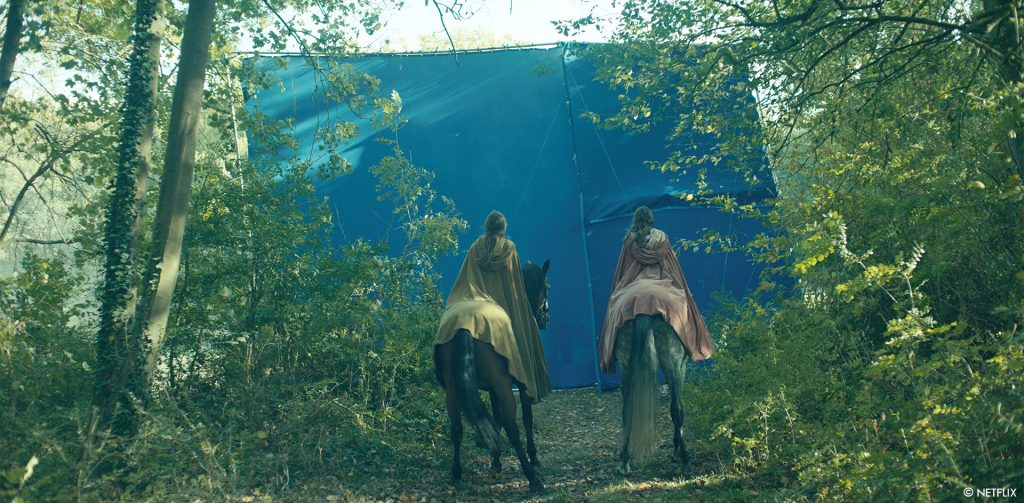

How did you organise the work with your VFX Producer?
The VFX Producer was present at all the prep meetings and technical spotting, so he had a global vision of most of the shots we had to deal with in VFX right from the start of shooting. During post-production, he was mainly in charge of the budget follow-up and a coordinator took over the internal follow-up of the VFX production and the exchanges with the different interlocutors of the post-production chain, this allowed me to concentrate only on the artistic and technical aspects.
How did you handle the challenge of the 4K deliveries?
We had already worked on several 4K productions so we were used to managing heavy formats. It was a bit more complex to manage the deliveries of full CGI shots, which required a lot of computing time and a lot of disk space.

Did you need to adapt your methodology and pipeline for that?
The pipeline already existed for the 4K ACES, so we made some improvements to optimise the work of the artists. It was not so much the image format that was sometimes problematic, but rather the fact that an image is delivered for HDR calibration. This involves constantly checking very low and very high light levels and can cause some post-calibration surprises.
How did you use your previous experience with period show such as The Emperor of Paris on La Revolution?
The work on The Emperor of Paris was much more focused on the history and truthfulness of things, which led us to do a lot of research on Parisian architecture and its evolution. Here the work was quite different as it was about inventing a city from all sides, keeping in mind that it had to be plausible for the end of the 18th century. We took a lot of freedom in the designs and were inspired by Parisian architecture and photos by Atget or Marville. Technically speaking, this belongs to the same category of effect (extension or creation of environment) so necessarily the experience gained on The Emperor of Paris and Versailles helped us in our approach to faking and in our methodology.


What kind of references and influences did you receive from the production to create the various environments and especially the prison?
We received references mainly from Aurélien and Gwendal Bescond, the production designer, who passed on to us part of his iconographic research, including photos of Atget, Marville and some 18th and 19th century paintings. We were inspired by all this material to create the city, the prison and its atmosphere. It was Gwendal who pointed us to the Château de la Madeleine in the Parisian suburbs, which served as the basis for the prison’s design. We exchanged frequently with him at the beginning during the creation of the first designs in order to refine the first visual proposals.
The other references are mainly the fruit of exchanges with Aurélien Molas who had already imagined a certain number of things. He told me a lot about the favelas of Brazil, especially the one of Rocinha in Rio. He wanted to find in the city this idea of piling up and density of houses extending on both sides of the hills. He also liked the atmosphere of the more heroic fantasy cities of The Hobbit and overall he wanted to find the atmosphere of certain films such as Brotherhood of the Wolf for example.


Can you elaborates about the environments creation?
There are basically 3 types of environment creation in the series. On the one hand, building extensions and discoveries based on real street scenery (shot at the Bry sur Marne studio). We carried out a photogrammetry of the backlot from the bottom using hundreds of photos and also from aerial shots taken with a drone in order to be able to reconstitute the alleys in a 3D space on which we came to lay new volumes. Some of the discoveries were made in matte painting, again based on a layout and a model of the buildings, such as the discovery of the church. On the other hand, there are the full matte painting plans which are conceived rather from projections of textures on slightly lower def volumes (the plans of the prison and the plans of the city at the edge of the forest). And finally there are the full CGI shots with very detailed modelling, cloth, 3D figuration, rendering and FX.


Did you use procedural tools for the city environment?
We did not use procedural tools. The city was set up by hand and the buildings were placed according to the frame and the different camera movements.
The city and prison environments are seen in various light conditions. How does that affects you lighting work?
Each CG shot of the city has its own rendering according to the temporality (night and day) and also according to the frame and camera movement. The matte paintings in the prison have also received special treatment depending on the desired atmosphere and time of day. Each of these shots was treated differently in compositing, as all the dressing (smoke, sky, city lights) had to be adapted to the new lightings.

Can you explain in detail about the boats creations?
We started by making a sketch of the boat on Photoshop and then we looked for a Galleon references that was as close as possible to the design. The boat was then modelled and textured as close as possible to the reference galleon. The sails and other ropes were simulated in cloth and we added 3D extras on the boat to add life. The boats were then composed in the shots we had shot.


Can you tell us more about the beautiful shot of the wreckage on the shore?
We shot the master plate on a beach in the bay of Arcachon and waited until we had the right light to have a backlit wreckage shot. We then used one of the Galleons we had modelled for the Albert landing sequence. We adapted the model to obtain a fairly graphic wreck and then we lighted it in the light of the plan. We added a bit of cloth and vegetation to add a little life to it.



With a title like La Revolution, the series is obviously full of beheading. How did you work with the SFX teams for this kind of shots?
We worked with Guillaume Castagne and the Atelier 69 team. Most of the shots were made with heads moulded on the actors and articulated mannequin systems. Some shots were made in multi-pass: we shot the action once with the actors and then we repeated the action with the stuntman or the dummy and the MFX head. There was a blood base shot live and we added what was missing to give credibility to the action.
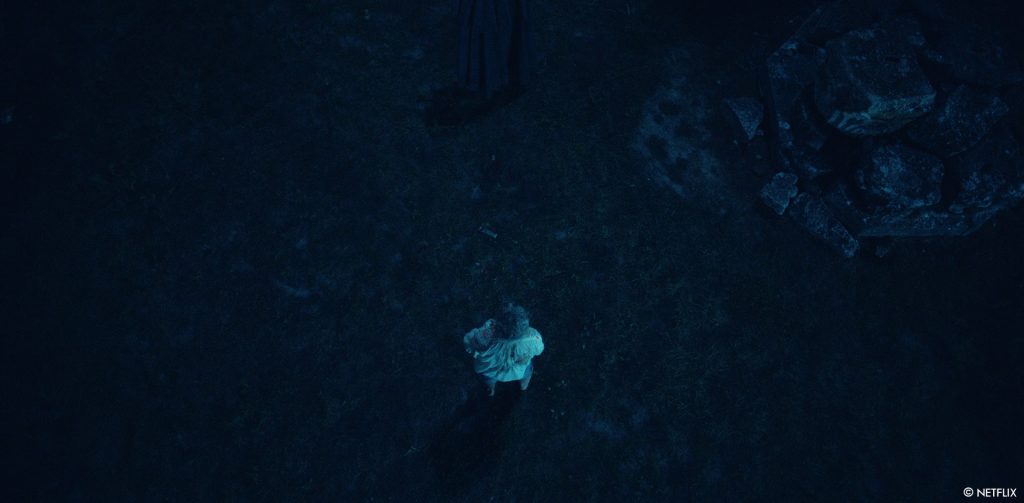

Can you tell us more about your work with the stunt teams?
There was close collaboration with Michel Bouis’ stunt team, especially on the landing stage and on the urban guerrilla scenes. We had quite a few meetings with each other to set up the stunts and to optimise the role of each department (stunt, horses, SFX and MFX) in order to obtain realistic scenes. We have always tried to favour live actions such as the blast of explosions or the burning horse. Our role was mainly to take over when it became dangerous for the actors or stuntmen or to amplify certain effects (adding knife or sword blades, extending flames, etc.).


Can you elaborates about the Blue Blood animation on the bodies?
Here too we worked with Atelier 69 and the make-up artist SFX from the set (Céline Lléréna). A base of veins was always airbrushed on the torso or face of the actors because there was a certain number of shots that didn’t require animation. When these veins needed to be animated and spread, we would keep the painted base and we would come and put small tracking dots on the area to be faked. Then in post-production we worked essentially with textures that we projected in cam map or just in 2D depending on the complexity of the plans.
The decapitation shots with blood spurts and blood pools were mostly made in 3D on Houdini specifically for the shots concerned. Other more basic shots in terms of blood (musket impacts, various slices and stab wounds) were faked with stock shots and matte painting for the impacts, in full 2D.

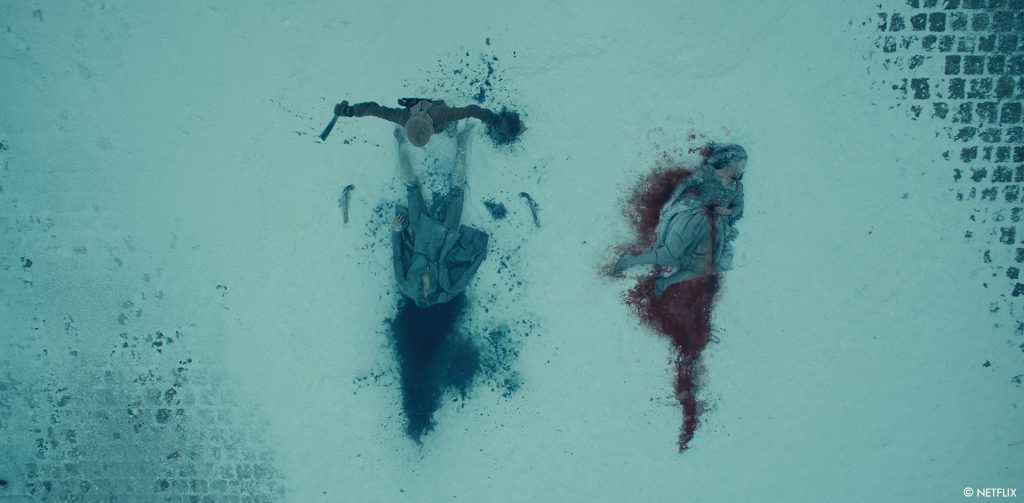
The series is full of FX such as fire, explosions and mist. How did you create and animate those elements?
Most of the explosions were made live with François Philippi’s SFX team and did not require a double VFX pass. The SFX had a fireball system which, cleverly placed in the frame and far enough away from the actors, made the explosions look huge in the picture. We also worked with the stuntmen and a bit of wires (to be erased afterwards) for certain shots, notably the human torches where a fire base was planned at the shoot and then increased in post. The most impressive shot is undoubtedly the shot of the burning horse. We had planned to add a lot of flames but the work of Chino, Mario Luraschi’s stunt trimmer, was so satisfying that we only had to add flames on the rider’s head to hide the rider’s bonnet and stunt gel.
As for the smoke and fog, here too we faked it from a filmed base. As we were outdoors with weather conditions that were not advantageous for this kind of shot, we generated a lot of smoke in FX 3D mainly on the scenery of the island where the captives are chained. Each time we made photogrammetries of the scenery in order to be able to reconstruct them in CGI and generate the missing elements. As for the fire and smokes in the establishing plans of the city, it is a mixture of 3D and stockshots.

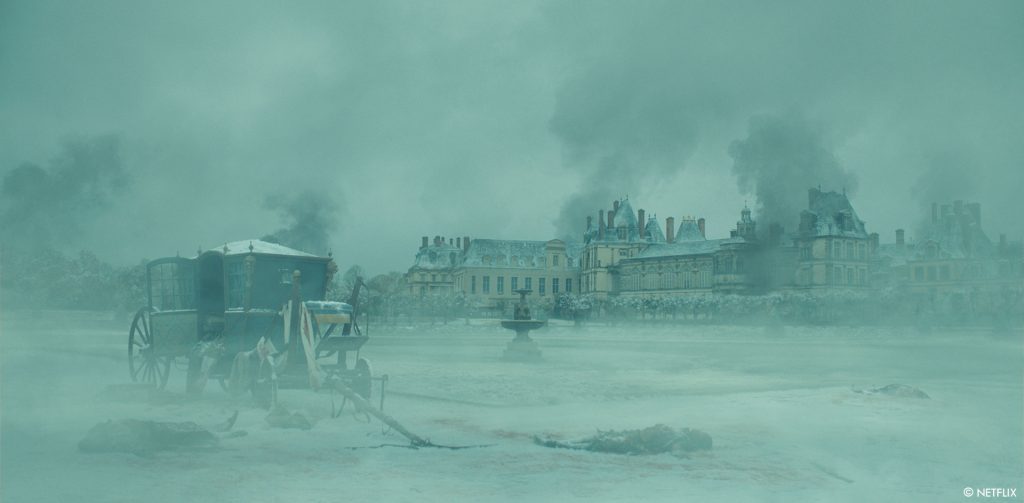
Which sequence or shot was the most complicated to create and why?
There were no insurmountable difficulties in the series and no technically complex shots. But it can be said that the longest shots to be made were the city shots as they represent hours and hours of modelling and texturing to bring detail and richness. They are also shots that have a clean rendering, so the compositing had to be adapted and modified at all times.
Is there something specific that gives you some really short nights?
The short nights took place more on the set than in the post! We filmed a lot of night shoots and the post-production was spread over several months, which allowed us to avoid working at night.
Is there any other invisible effects you want to reveal to us?
The effects are quite visible overall in the series but there are a whole series of shots where we have extended the backlot set. The streets were built on a ground floor and one floor, sometimes two, so we had to finish the floors and put roofs on some buildings, create some discoveries etc… We also rigged all the shots concerned with anachronisms to be erased, knife blades to be added in CGI, snow extensions for the prologue set.
What is your favorite shot or sequence?
I really like the horse on fire sequence because it was very impressive to shoot. As for the favourite shot we had to worked on is the wreckage shot because I think the light is really nice and the final shot was very well done.
What is your best memory on this show?
I have several good memories of filming, especially when we shot the landing sequence in the bay of Arcachon. The natural setting and the light were really incredible! What’s more, the filming of these sequences came towards the end and the whole team knew each other well so there was a very good spirit. It was a great adventure!
I also really appreciated the shooting of the guerrilla sequences of episode 8 which were shot in real conditions of rain, mud, explosion and waterfall. It was very difficult for the whole team but in the end the result is quite impressive!
As for the post-production, we were forced to work remotely during the containment to deliver the last episodes, despite the difficulties linked to teleworking the team invested a lot and managed to maintain a good work dynamic until the end of the project.

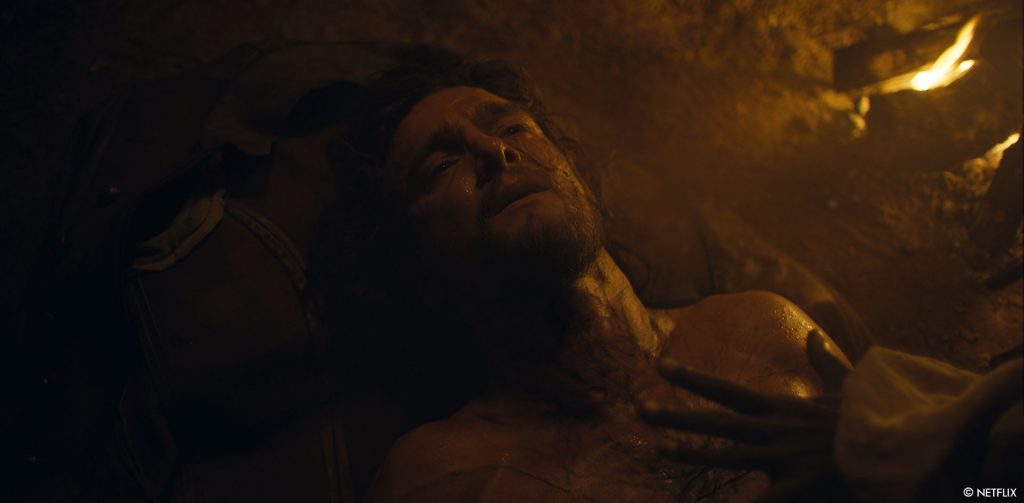
How long have you worked on this show?
Including the preparation and shooting, I worked almost a year on La Révolution.
What’s the VFX shots count?
We did 477 VFX shots over the 8 episodes.
What was the size of your team?
The team consisted of about 30 people depending on the stages of production.
What is your next project?
I’m currently working on several feature films in post-production and shooting.
A big thanks for your time.
// La Révolution – VFX Breakdown – CGEV
WANT TO KNOW MORE?
CGEV: Official website of CGEV.
Netflix: You can watch La Révolution on Netflix now.
© Vincent Frei – The Art of VFX – 2021




